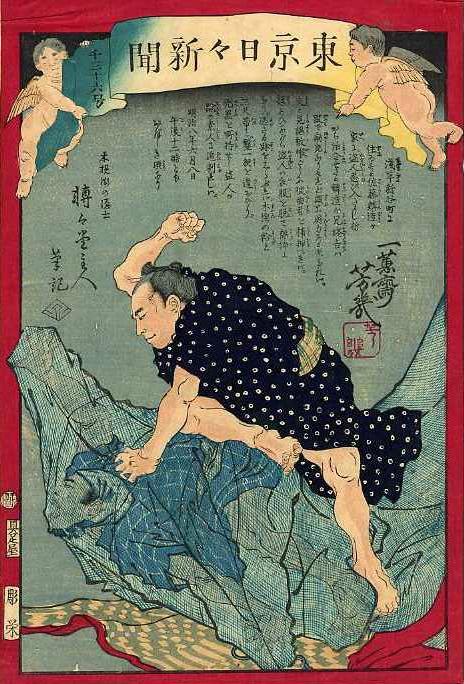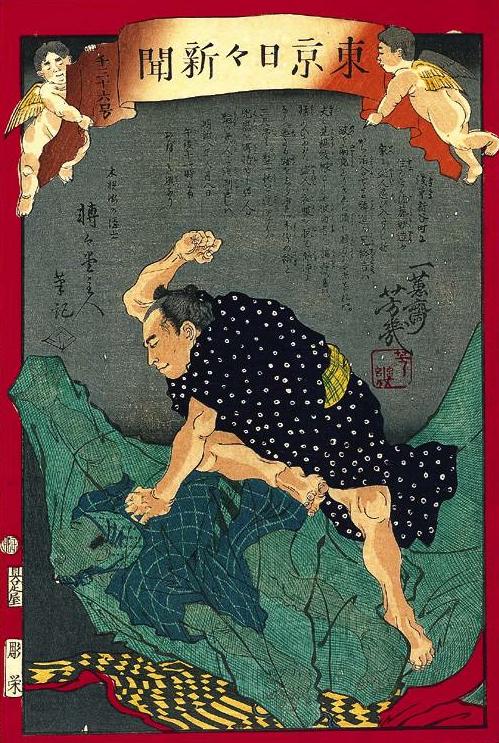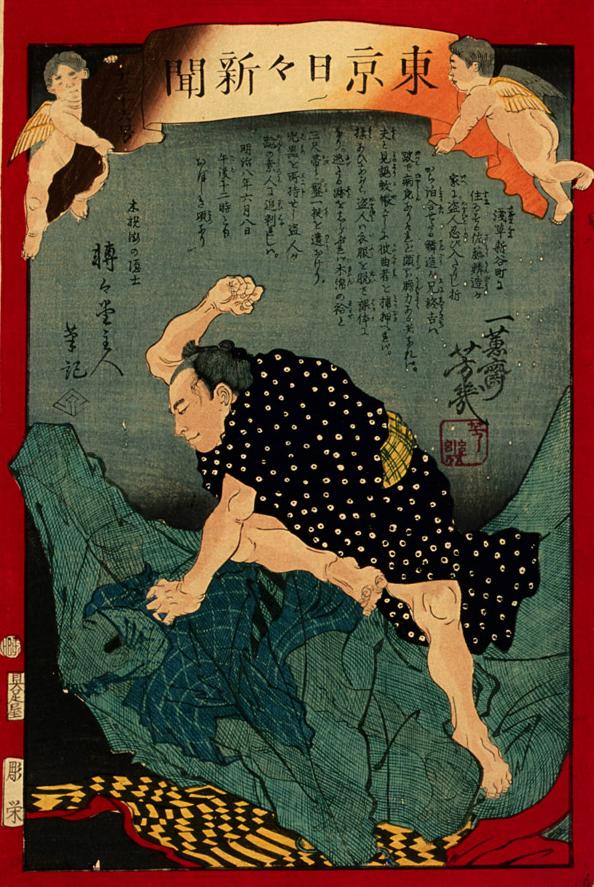Commentary
In this story, the date is saved for the end, much like that of TNS-1054 Confessions of evil, also by Tentendō. With regard to this style, see also TNS-9001 Jilted shizoku runs amok.
lame leg reflects 跛 (bikko) and sickly body represents 病身 (biyaushin byaushin byōshin).
stripped reflects 追剥 (おいはが) れし (oihagareshi). A person who robbed people on roads of their clothes and possessions was called an "oihagi" (追剥), the noun form of the verb "oihagu" (追剥ぐ), compounded of "ou" (追う) meaning to pursue or follow, and "hagu" (剥ぐ) meaning to remove or strip something from a surface. A play is made on the reversal of consequences -- the robber, in this case, losing his clothes to the would-be victim.
layman with a limp reflects 踗の素人 (chinba no shiroto), referring to the man who stopped the intruder -- an "amateur" or "ordinary person" or "whitish person" (素人 shira-uto, shiro-uto, shirōto) in contrast with the thief, who judging from what he left behind was a "professional" or "specialist" or "blackish person" (玄人 kuro-uto, kurō).
"Chinba" refers to a condition about the legs, feet, or footwear being odd or different, such as a bad leg, or a shoe or sock that doesn't match. Present-day dictionaries usually graph "chinba" as 跛, since 踗 is not available in common font sets. Here "chinba" (踗) is synonymous with "bikko" (跛) as used when introducing Rinzō.
Recluse of Kobikimachi reflects (木挽街の隠士 Kobikimachi no inshi). 隠士 (inshi) refers to a person who, having retired, avoids a lot of social intercourse and otherwise leads a relatively choistered live.
Takabatake Ransen also styled himself this way when signing as Tentendō Shujin on TNS-1027 and TNS-1052. He signed TNS-0838 as 木挽街の逸民 (Kobikimachi no itsumin), which similarly means "Retiree of Kobikimachi".
The reading of 木挽街 is not provided, and it might have been read "Kobikigai" -- or even "Kobikichō", as it referred to what was more commonly written 木挽町, generally read "Kobukichō" but also read "Kobukimachi".
Kobikichō (木挽町) -- as the street or neighborhood was also called, and possibly 木挽街 was read as such -- is now in Ginza 4-chome of Chūō-ku in Tokyo. However, the Ginza (銀座) area, first defined in 1870, initially ran from 1-chome to 4-chome. The area was later expanded to 5-chome and 6-chome, which embraced Owarichō (尾張町) 1-chome and 2-chome, and 7-chome or Takekawachō (竹川町), and 8-chome including Izumochō (出雲町) and Minami Kinrokuchō (南金六町).
When leaving Tokyo (Tokei) castle (formerly Edo castle) through the Sukiyamon gate to the outer grounds, on the Marunouchi side of the castle, one would cross Sukiyabashi bridge to the intersection of Ginza 4-chome. Ginzamachi was to the left and Owaricho was to the right. People playfully said the intersection marked "the end (終わり owari) of Ginza and the beginning (始まり hajimari) of Owarichō".


